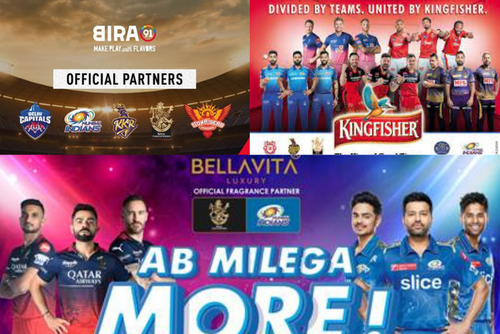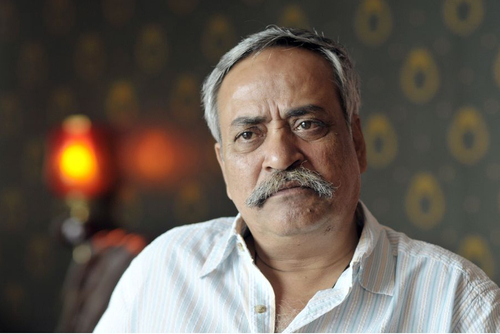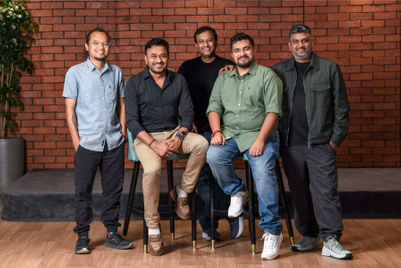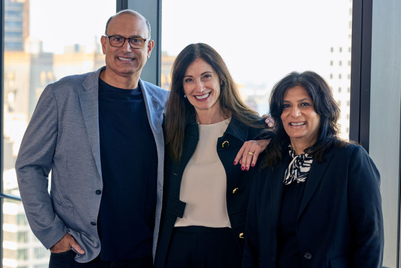.jpg&h=570&w=855&q=100&v=20250320&c=1)
In October 2020, Stevie Nicks’ Dreams unexpectedly re-entered the Billboard charts, propelled by a viral TikTok clip of Nathan Apodaca skateboarding with an Ocean Spray drink while lip-synching the 1977 Fleetwood Mac track. Within weeks, the song hit 16 million weekly streams, crossed half a billion plays on Spotify, and pushed Nicks to the top of Billboard’s Hot 100 Songwriters chart.
But while the internet basked in the nostalgia, Primary Wave Music was finalising a partnership with Nicks, which would prove more enduring. The global independent publisher acquired a majority stake in her publishing copyrights, brought Kobalt on board for administration, and began representing her in brand alliances and marketing opportunities. The deal covered her catalogue of timeless hits, including Landslide, Edge of Seventeen, Stand Back, and of course Dreams.
For Jeffrey L. Straughn, chief brand officer and senior partner at Primary Wave, the viral moment was only the starting point. Recognising both Nicks’ personal fandom for Barbie and the renewed cultural relevance of Dreams, his team pitched Mattel. In 2023, the company released a Barbie doll in Nicks’ likeness.
“During the middle of a concert at Madison Square Garden, Nicks launched the doll, and the entire collection was sold out within two hours based on that one promotion she did on her show,” Straughn recalled. “The idea of that creates a much greater demand and visibility for the brand and the artist, then just having this music playing as part of a random video.”
For Straughn, music on its own is a “standalone product” with limits. The real value, he argued, comes from activating an artist’s intellectual property.
Primary Wave had demonstrated this with Whitney Houston—slot machines in Las Vegas casinos featuring her likeness and music drew younger audiences; a 2022 limited-edition collaboration with MAC Cosmetics released 11 products in 80 countries, packaged in metallic gold and named “Nippy” after her childhood nickname; and a biopic on her life was greenlit the same year.
“These ideas lend a lot more latitude for creative execution than if you're limited to just using music,” he said.
On his first trip to Asia, Straughn visited Mumbai, New Delhi and the Taj Mahal before heading to Singapore, Osaka and Hong Kong. And unlike most non-Indians, he could not stop digging into the food in the city. “Spicy food, which is what Texans love,” he laughed, admitting India left an impression beyond music and marketing. And just like the local cuisine, he can’t wait to unravel the country’s music scenario. .
Protecting legacies while staying relevant
Since it was founded in 2006, Primary Wave has built its reputation on turning music catalogues into cultural assets. But it also faces the delicate task of safeguarding legacies. Straughn claims that the company is privileged to work with some iconic artists of this century, including Bob Marley, Prince, Olivia Newton-John, Aerosmith, Def Leppard, War, Boy George and Noel Hogan of the Cranberries. Yet, he does not want the company to be seen as commercialising on the greatness of the art. “It starts with credibility and authenticity,” he maintained.
Hence, every programme begins with a deep dive into the artist or their estate. Primary Wave has a two-way partnership with every single catalogue, so, while it technically may have creative control, it never executes a program without the other side’s support.
Some lucrative opportunities have been turned down for lack of authenticity. “We believe this could move the artist forward and we must ensure we strike that balance which is genuine and purposeful,” Straughn said.
This insistence on credibility reflects a broader shift. In the 1960s and 70s, most musicians never engaged with brands. Today, estates and managers are reconsidering the possibilities when they see others succeeding.
The economic power of contemporary artists
Artists like Taylor Swift and Coldplay demonstrate how contemporary acts can shape economies. Swift’s Eras Tour has become the highest-grossing concert tour in history with over $2 billion in ticket sales, boosting US local economies by an estimated $5–10 billion.
Over the past three months, Bad Bunny has drawn an estimated $200 million into Puerto Rico’s economy, and the tally will likely be higher once the residency ends on September 14. Closer home, Coldplay’s 2025 India shows caused BookMyShow’s website to crash when tickets went on sale.
Does Primary Wave see itself working with such artists? “It depends on the musician,” Straughn said. “Coldplay is at the pinnacle, but co-founder Chris Martin will tell you that the band is unlikely to see any benefit to share his brand with another one. It is because he is focused on supporting non-profit initiatives.”
While open to working with contemporary acts, he stressed genre and appetite matter. He opined that urban musicians, rappers and R&B artists have a different perspective on branding.
But Primary Wave’s focus remains elsewhere. “The youngest artists we're going to have are probably in their mid-40s and upward. They've already been somewhat established before we come into that play,” Straughn clarified. Synchronisation for advertisers—using music without necessarily invoking the artist’s image—remains the only exception.
AI, authenticity and risk
The industry is grappling with AI’s disruptive potential. “If done carefully and creatively, AI is an absolute home run,” Straughn said.
Primary Wave co-owns The Brook, a technology company exploring holograms and metaverse experiences. Notorious BIG was among the first artists to have a hologram in 2016, and those efforts are now being modernised.
Still, Straughn cautions against reckless use. “Brands have to be very careful about the sensitivity of how AI reflects with the consumer and whether they are abusing the technology to sell more products.” The parallels to early fears over digital rights management in the 1980s are not lost on him. “It’s more about managing from a sensible perspective, and looking at the opportunity carefully.”
He pointed to when James Brown, an American singer-producer who made his catalogue stems (individual, stereo audio files of grouped instrument sections from a complete track) open-source, allowing other artists to sample freely. “To this day, he's the most sampled artist in the hip-hop world because it contemporised him and kept him relevant,” Straughn said, underscoring how openness can future-proof a legacy.
Primary Wave’s $2 billion partnership with Brookfield Asset Management has accelerated catalogue acquisitions, giving the company scale to pursue larger opportunities. “Luther Ronzoni Vandross Jr is a R&B icon in North America and Europe,” Straughn explained.
A campaign with luxury crystalware maker Waterford tied to Vandross’ love of entertaining guests brought depth to his fan connection. “This gave the brand an opportunity to educate the average fan about Luther, to go deeper into the layers of a relationship between the fan and artist that you can’t do if you just hear the sound of the music.”
Brookfield’s capital, he added, “saw early on the way we can market artists and change the game of that talent’s global awareness.”
Music as strategy, not soundtrack
Primary Wave’s India presence flows through its partnership with Times Music. “We would love to work with legacy artists in India,” Straughn said. Bollywood icons like Kishore Kumar and R.D. Burman remain culturally relevant, and the model echoes efforts in Latin America, where Primary Wave is seeking partnerships with heritage artists.
“There’s a hunger in the US to bring some international music into that market. There’s also a hunger for artists in India to expand their reach beyond Asia. Primary Wave is set up to do that,” he explained.
Categories like alcohol, telecom, consumer goods, beauty, and food continue to dominate brand interest. “Irrespective of where one is in the world, it’s about understanding the brand’s position and then tailoring the programme with artists like James Brown, Whitney Houston, Luther Vandross or Notorious BIG—and localising the opportunity so it feels connected to the consumer in India.”
Straughn is candid about how brands often underutilise music. “In India, people spend a lot of money on things like sports, especially cricket. That’s the comfort zone,” he observed. But he believes music can rival sport in building long-term equity. “Lifestyle marketing is critically important as a brand evolves and to contemporise itself. Music has the ability to do that, and brands are recognising how the sonic connection can build relatability.”
Citing jingles from MasterCard and Coca-Cola, he argued that sonic memory strengthens brand recall. “In the next five years, you will see brands in India go further into that space,” he predicted. Primary Wave, through its Times Music venture, aims to localise familiar catalogues with Indian artists, creating commemorative tie-ins and limited-edition products that carry both heritage and relevance.
Balancing nostalgia with tomorrow
Asked about his favourite artists, Straughn went personal—Whitney Houston’s first album was his first CD purchase; he later discovered Bob Marley at college; and as a rock fan, he cites Boston’s Tom Scholz and Genesis’ Phil Collins as enduring inspirations.
The sentiment underscores his larger philosophy. Primary Wave isn’t just managing legacies; it’s constantly reframing them for cultural relevance. The challenge is making legends resonate without commodifying them.
As AI-generated tracks multiply, concerts evolve into billion-dollar economic engines, and global audiences demand both heritage and novelty, Straughn’s approach raises a pressing question for marketers: are they ready to treat music as a strategic pillar rather than a background layer?
For CMOs still content to license a song for a campaign and move on, the warning is clear. Music is no longer just what plays in the ad—it’s what anchors the brand in culture.




.jpg&h=334&w=500&q=100&v=20250320&c=1)



.jpg&h=334&w=500&q=100&v=20250320&c=1)

.jpg&h=334&w=500&q=100&v=20250320&c=1)


.png&h=268&w=401&q=100&v=20250320&c=1)
.jpg&h=268&w=401&q=100&v=20250320&c=1)

.jpg&h=268&w=401&q=100&v=20250320&c=1)

.jpg&h=268&w=401&q=100&v=20250320&c=1)

